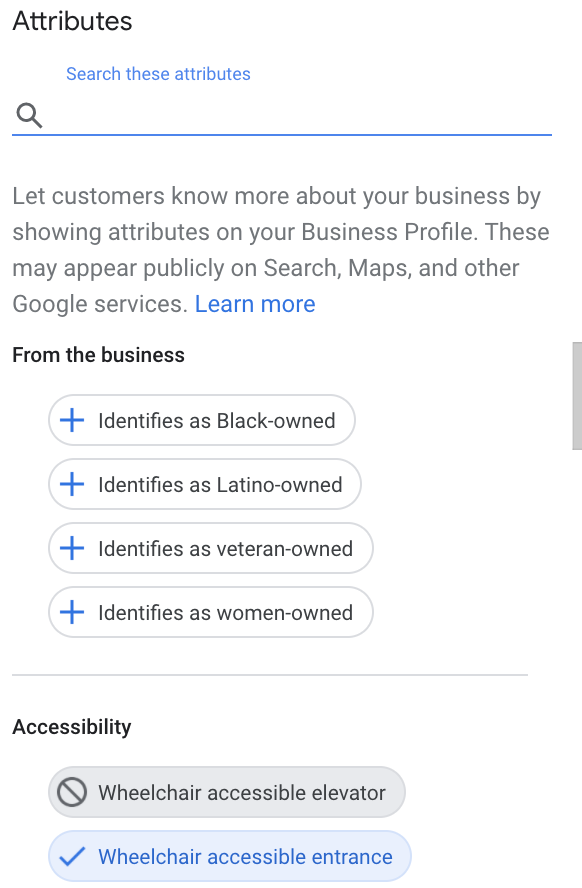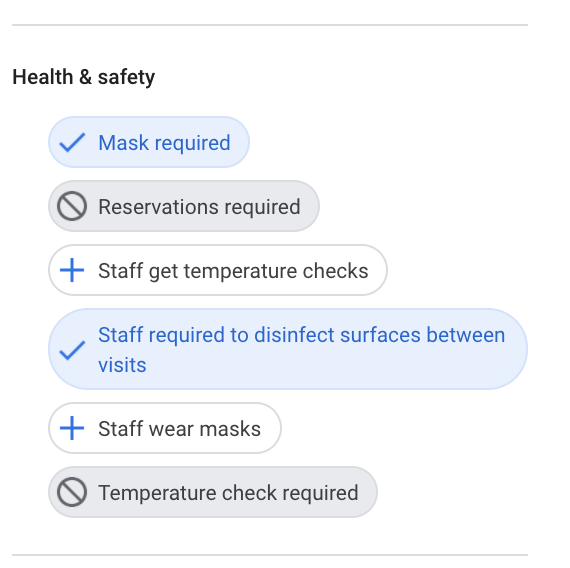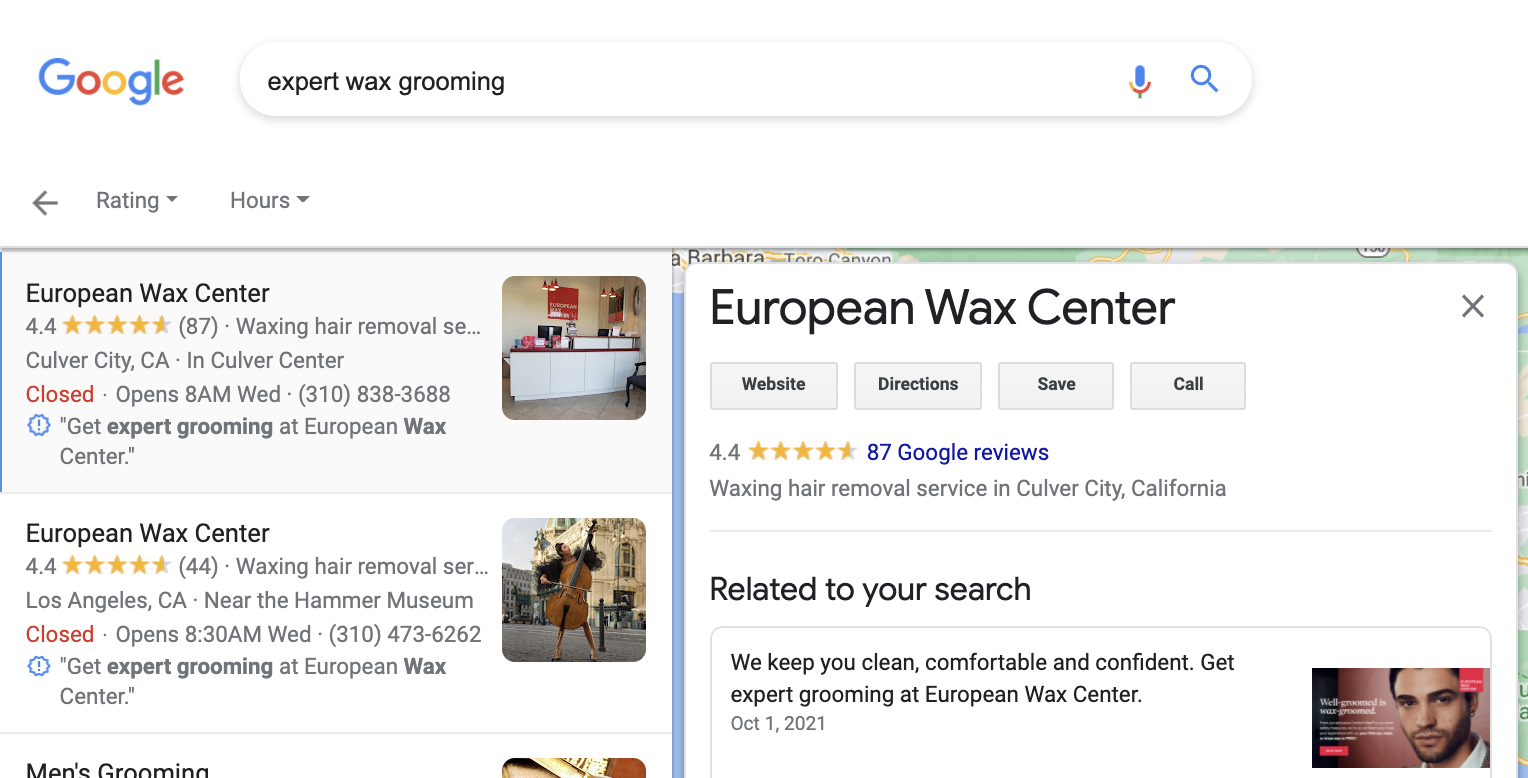Local search marketing is key for any location but when faced with a competitive market, it’s essential that you have strategies to help you stand out.
The closer the user is to a location, the more likely it will rank. However, in denser areas, a location will face more competition.
By accelerating efforts around Google My Business (GMB) and location page management, a location’s relevance and prominence can increase a business’s rankings resulting in increased local visibility, especially in competitive markets.
In this post, we will break down strategies for both GMB and location pages to drive more local business.
How Google Ranks Local Results
Google states that “Local results are based primarily on relevance, distance, and prominence.”
Relevance is how applicable the result is to what someone is searching for.
Distance looks at how far the results are from the searcher for the location term.
Prominence refers to how reputable a location is in its local market. Plus, it takes into consideration factors such as articles, links, directories, review count, reviews score, and SEO.
A business can only directly impact relevance and prominence. Distance is determined by where the user is and cannot be optimized for.
Maximizing Google My Business In Competitive Markets
Having a successful listing on GMB requires leveraging all the different capabilities and features offered. Maximizing the use of each will allow your business to increase its presence in your local market.
Check out these opportunities to enhance your local listings.
1. Profiles
Google recommends that your profiles be “accurate, complete, and engaging.”
Start by accessing the Info tab within your GMB profile. Take advantage of all of the different features within this section.
All Attributes should be updated so the listing is reflective of your current business operations.
 Screenshot from Google My Business, October 2021
Screenshot from Google My Business, October 2021Make sure to also add any links to your website, for reservations, your menu, or even appointments.
Hours of operations are also found within this tab and it is critical to maintain accurate hours every day of the year.
Special hours can be also added for holidays, events, or during a specific time period. Make sure to regularly check and update your listings so they continue to be accurate, complete, and engaging.
 Screenshot from Google My Business, October 2021
Screenshot from Google My Business, October 20212. Google Posts
Another way to make your profile more engaging is through Google Posts.
Posts are a great way to keep your listings current and promote any key offerings. It also is a way for a business to share a quick update.
Google Post content can also impact rankings. For example, if a searcher’s query is for “expert wax grooming,” Google will look at the content in your listing and leverage the Google Post content.
As seen in the example below, those results are “related to your search” and therefore that location is being surfaced as the primary result.
 Screenshot from search for [expert wax grooming], October 2021
Screenshot from search for [expert wax grooming], October 20213. Reviews
Reviews tend to be an overlooked area of GMB, but Google clearly states in their description of prominence that “Google review count and review score factor into local search ranking.”
Maintaining as high a score as possible will be key while also looking to increase review volume. The more reviews you have, the better your listing will perform.
But how many will be based on your competition? Look at your competitor’s review volume and scores to get a baseline of where your location would need to be.
Receiving reviews on a consistent basis is critical. Implementing a strategy to solicit reviews can be helpful to increase review volumes and scores.
Google has a way of creating a short URL for you to share with customers to leave a review. Not only do you want to receive reviews, but you also want to respond as well.
As Google states,
“When you reply to reviews, it shows that you value your customers and their feedback. High-quality, positive reviews from your customers can improve your business visibility and increase the likelihood that a shopper will visit your location.”
Leaving a high-quality engaging response that is unique to each customer is the best approach.
4. High-Quality Photos & Video
Photos and videos are a great way to make your profile more engaging and let a customer know what to expect when visiting your location. Photos that match a product or service query will help a listing stand out too.
Adding photos of new menu items, completed projects, items for sale, your store’s layout, or storefront will all increase a user’s engagement with your profile.
Consistently add new photos to keep your profile fresh and engaging.
Maximizing Location Pages In Competitive Markets
Location Pages are critical to any local search strategy, but how the information is presented and structured will dictate how it performs on Google. This is where prominence is heavily factored in.
Google states, “Prominence is also based on information that Google has about a business, from across the web, like links, articles, and directories.”
Also, “your position in web results is also a factor, so search engine optimization (SEO) best practices apply.”
Many location pages normally only contain the business’ name, address, phone number, hours of operation, and a short description with a stock photo.
By enlisting the strategies below you will allow your location to stand out in a crowded and competitive market.
5. Hyperlocal Content
Hyperlocal content is a great way to create unique content that stands out locally. And, you don’t have to create long-form, time-consuming content. Content on a location page can often be boilerplate or rather generic.
By taking the following two different approaches, you can highlight what is unique about anything outside of the location and what is uniquely specific to the inside of the location.
Outside content ideas could include mentioning specific neighborhoods, nearby highways, schools or universities, museums, arenas, or other key landmarks.
Inside content ideas could include any events or promotions offered specifically in that location, such as a kids night, matinee offering, TVs for a big game or show, live music, even a list of staff members who work there with bios, and any other information that makes that location unique.
This allows a page to provide engaging content that helps increase relevance and prominence.
6. Schema Markup
Another great SEO tactic to implement is schema markup. When adding schema markup to a location page it allows for microdata to be included in a rich snippet since it “adds context and displays attributes that Google loves.”
These snippets help make a business stand out more prominently in the SERPs.
Schema Markup is not a ranking factor, but a sound tactic to make your location page more prominent.
If your links stand out more in the SERPs and lead to more engagement, that could impact your rankings as your result since the result is becoming more relevant, too.
7. Link Signals
Links are key to any SEO strategy. Links to your location’s page from another site pass PageRank.
The number of quality links to your site from others will determine how relevant a location is. Building citations through various directories has been a consistent way to build links relevant to local SEO.
The focus should also be on building local links through a site that is considered to be a local authority such as a local paper, the city chamber of commerce, or the city’s website.
8. Core Web Vitals
With a recent major Google update, Core Web Vitals are now a ranking factor. Businesses should be looking to optimize their page’s experience.
Google provides a tool to see page performance and then you can act on anything that is affecting your Core Web Vitals performance.
In some very competitive markets, businesses may not follow GMB’s rules. Keyword stuffing in a business name is the most common tactic used that is against the rules.
If you see a local business that is not following the rules you can report them to Google – here is what you can do.
By optimizing your GMB listings and location pages, your business can expect to drive more business locally.
By understanding how relevance, distance, and prominence factor into a result you can more effectively strategize on how to affect ranking.
The more you can do well and the more unique you can make your local marketing efforts, the more likely you will be to rank locally in a highly competitive market.
More Resources:
- New Research Shows How to Win in Local Search
- How to Create a Winning Local SEO Strategy for Your Business
- Local SEO: The Definitive Guide to Improve Your Local Search Rankings
Featured Image: Sammby/Shutterstock





